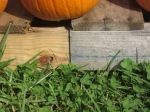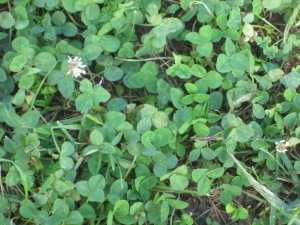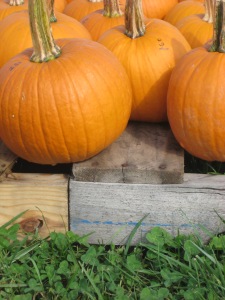On the way home from a trip to Washington, DC. I set the GPS, then absentmindedly follow its commands through a maze of beltways and interstates. Keep left on this, turn right on that… Before I know where I am, it’s leading me over the hills and far away—not up the Jersey Turnpike, as I’d planned to go, but a longer and more winding route through the green valleys of Pennsylvania. Recalculating.
Ah, well. It’s a pleasant fall day, leaves are turning, and all along these winding country highways are farmstands selling pie, honey, maple syrup, apples and pumpkins.
Halloween, coming soon. For a lover of ancient lore and bizarre superstitions surrounding plants, All Hallow’s Eve is the best holiday of the year (followed closely by Christmas.) How can you beat a holiday where you carve faces into vegetables? The old tradition, of course, is that the scary face of the Jack-o-lantern can frighten off or confuse evil spirits.
Sunset’s coming soon, and I’ll be on the road late again tonight. As the daylight dwindles and the nights grow longer, a sense of needing to fight off the darkness grows in all of us.
 But there’s a better way than pumpkin grins to protect yourself from any odd spirits that might be eyeing you at this time of the year. There’s other magic, more powerful, more ancient, lurking in the grass at your feet—under your feet, in fact. One of the world’s most potent plant superstitions is there, waiting for you to reach down for it.
But there’s a better way than pumpkin grins to protect yourself from any odd spirits that might be eyeing you at this time of the year. There’s other magic, more powerful, more ancient, lurking in the grass at your feet—under your feet, in fact. One of the world’s most potent plant superstitions is there, waiting for you to reach down for it.
And really, you’ve known about it all along.
(If you’ll permit me to quote myself, the following is taken from my book The Teeth of the Lion: The Story of the Beloved and Despised Dandelion–see the “About” page.)
—-How about you–do you know anything about the ancient lore and magical properties of plants? No?
Well, what does it mean if you find a four-leafed clover? You know, don’t you? For many years now, I have been conducting an informal survey on this important topic, at picnics and playgrounds and other outdoor venues. Everyone I ask stares at me like I’m asking them what planet they live on, and immediately give the correct response. I have, so far, never met anyone, man, woman, or child, of any nationality, who did not know that finding a four-leafed clover brought good luck.
Four-leafed clovers seem to be the very last remnants of a once-rich tradition, a wealth of knowledge and legend and myths about plants, that has been passed on verbally, over countless generations. Like the use of plants in medicine, it’s impossible to pin a date on these legends–they go back time out of mind. The origin of “lucky clovers” has been traced back to the Druids, a priestly cult of ancient Britain, who saw the three-in-one leaf as representative of Earth, Sea and Sky, so that clover was regarded as a powerful, magical plant. Later, Christianity put its own spin on the firmly-rooted pagan traditions, so that when St. Patrick explained the concept of the Trinity, he is said to have used the clover leaf as a living illustration of how something could be three, yet one. A fourth leaf provided extra good luck, perhaps because it had the shape of the cross. ——
Pumpkins and clover–now that’s powerful good magic. I spent quite a bit of time at the farmstand peering at the lawn, trying to find a 4-leafer, but as always, no luck. Not yet…






Recent Comments